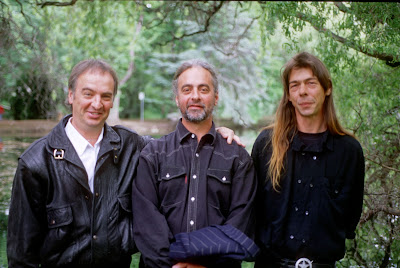A very Melbourne flora, black
Don’t yawn, but yet another black flower has been bred. The perfect button-hole decoration in my home town of Melbourne perhaps?
Petunia ‘Black Velvet’ will be available for sale in the UK around the time I arrive at Kew Gardens, and William and Kate are married – (Northern Hemisphere) spring.
According to the story posted by Tom Clarke on the Channel 4 site, the marketing manager with Banbury Horticulture, the company that developed the flower, says customers will like it because “it’s the intrigue, it’s sexy, it’s something different”.
You don’t find black flowers in nature, hence the fanatical desire to create a black flower, I guess. There are black tulips, black roses, black violets, black hyacinths and now a black petunia. Funnily enough, none of them are black, all of being a rather darkish purple. Still Banbury reckons their flower is the blackest, purple-flower, ever. He puts it down to the sheen caused by the velvety texture of the petunia petals.
A couple of years back I had a conversation with Simon Marnie about imagining a far-flung planet where you would gaze from your kitchen window at a tidy suburban black lawn and a nice crop of purple vegetables. If you like you can now add some black petunias to that picture.
According to Nancy Kiang, a NASA scientist working in New York at the time, that’s a reasonable thought. If instead you imagined a blue lawn or blue vegetables – that’s just silly (although of course blue flowers exist already). Dr Kiang was trying to help space explorers to target planets that might be suitable for plant-like life and what these living things might look like.
The key defining characteristic of ‘plant-like’ is photosynthesis – the process of using energy (here on earth, the sun’s energy) to turn carbon dioxide and water into sugars and oxygen.
Many planets won’t have the bright star we have to provide all that light energy. Red Dwarfs, for example, produce only a small fraction of the visible light we get from our Sun. So plants on a planet orbiting a Red Dwarf would need to hoard all the light they can get, rather than reflecting some of it back the way plants on earth do.
Most photosynthetic plants on earth don’t absorb green light, reflecting it back to us and give them their distinctive colour. There are purple bacteria, and brown and red seaweeds, but mostly our photosynthetic life is a shade of green.
This might seem a bit odd given that sunlight reaching the Earth’s surface is rich in green light. However red light is rich in photons, and blue light more energetic, so plants may have evolved to use the more ‘nutritious’ reds and blues.
In any case, a light hoarding plant on a planet near to a Red Dwarf would reflect hardly any light and might look black or purple. However Kiang says it is unlikely you will find a blue plant on any planet because blue light is particularly yummy for a plant.
Kiang thinks there are plenty of planets capable of hosting plants in range of odd colours. So when you are next gazing at planets with your telescope, look to see if they are covered in dark coloured vegetation. But don’t expect to see a blue moon, or planet. Back here on Earth we might soon be overwhelmed by those very dark purple flowers.
Image: Three Melbourne lads (actually my older step-brothers Chris, Jonathan and Tony) dressed in very dark purple. *Some of this post is taken from the Radio Archives (December 2007).

Comments